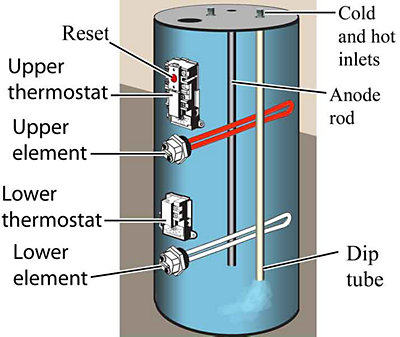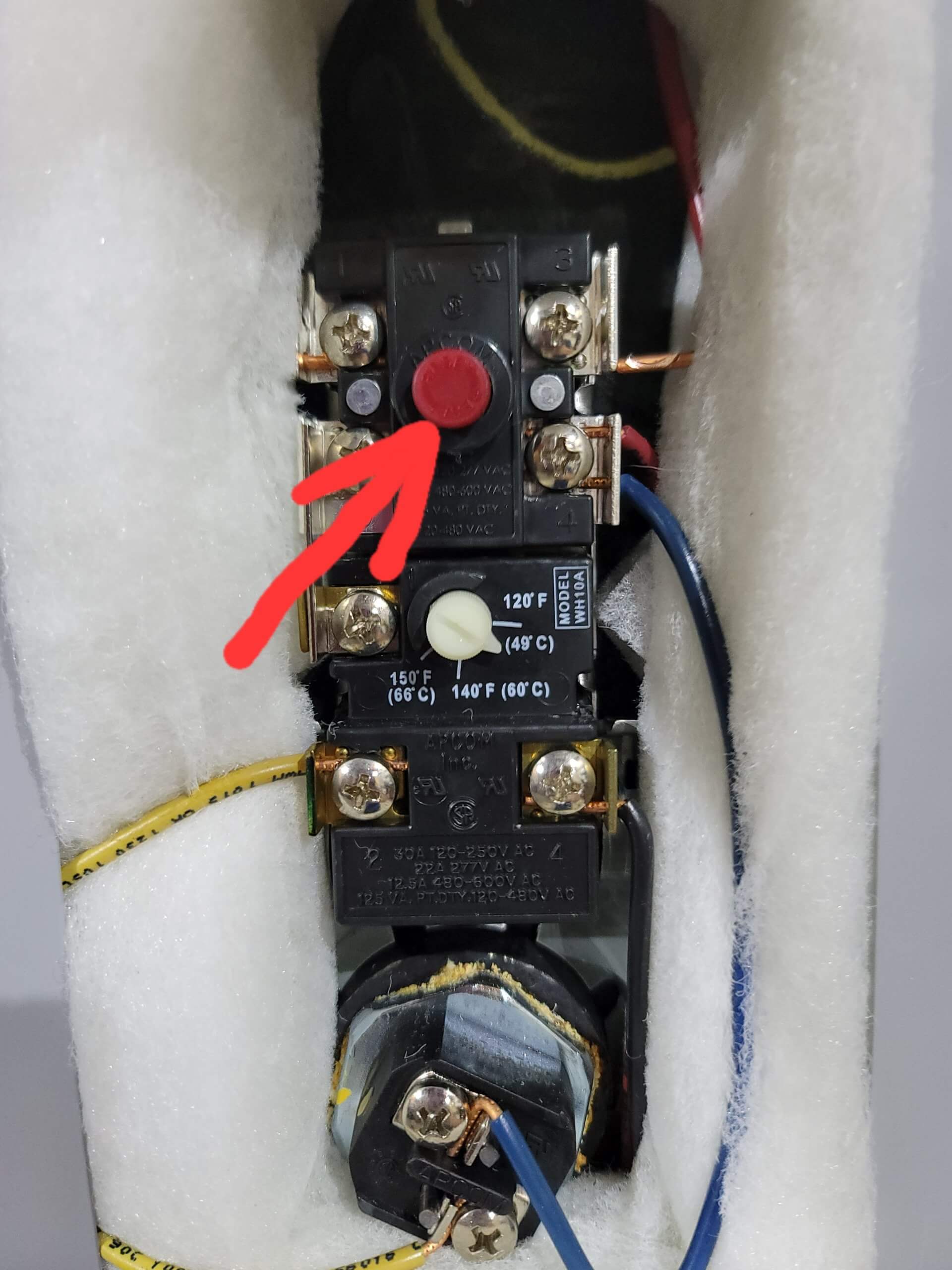Is your water heater thermostat causing you headaches by constantly tripping? You’re not alone.
This pesky problem can disrupt your daily routine and leave you without hot water when you need it most. Understanding why this happens is crucial to solving the issue and regaining control over your comfort. Imagine enjoying a soothing hot shower without the fear of sudden cold bursts.
We’ll dive into the reasons behind a tripping thermostat and guide you through simple solutions. Get ready to put an end to this frustration and enjoy consistent hot water again. Stick around to discover how you can tackle this issue effectively.
Page Contents
Common Causes
When your water heater thermostat keeps tripping, it can be frustrating. Understanding the common causes helps in diagnosing the problem. These factors can disrupt the normal functioning of your water heater.
Faulty Thermostat
A faulty thermostat can cause repeated tripping. It might not regulate the temperature correctly. Check for signs of wear or damage on the thermostat. A broken thermostat may send wrong signals, causing issues.
High Water Temperature
Excessive water temperature can trigger the thermostat to trip. This happens when the heater overheats. Ensure the temperature setting is not too high. High heat can strain the system, leading to frequent trips.
Electrical Issues
Electrical issues can affect the thermostat’s performance. Faulty wiring or loose connections may cause it to trip. Inspect electrical components for any faults. Proper maintenance of electrical parts is crucial.
Sediment Build-up
Sediment build-up in the tank can lead to thermostat problems. Sediment can insulate the heating elements, causing overheating. Regular cleaning helps in reducing sediment accumulation. A clean tank ensures efficient operation.
Symptoms Of A Tripping Thermostat
A tripping thermostat can disrupt your water heater’s performance. Understanding the symptoms helps in addressing the issue swiftly. Identifying these signs early can prevent larger problems. Let’s explore the common symptoms.
Erratic Temperature Changes
Water temperature fluctuates without warning. One moment it’s hot, the next it’s cold. This inconsistency can signal a thermostat issue.
Frequent Resetting Required
Constantly needing to reset the thermostat is a clear sign. It indicates an underlying malfunction. Regular resets should not be necessary.
Unusual Noises
Strange sounds from the water heater can point to problems. These noises might include buzzing or clicking. They often accompany a tripping thermostat.
Troubleshooting Techniques
Having trouble with your water heater thermostat tripping can be frustrating, especially when you’re in the middle of enjoying a hot shower. Fortunately, troubleshooting the issue doesn’t have to be overwhelming. This guide will walk you through some practical techniques to identify and potentially fix the problem. Whether it’s inspecting the thermostat or ensuring clean connections, these steps are straightforward and can save you time and money.
Inspecting The Thermostat
Start by inspecting the thermostat itself. Is it set to the correct temperature? Sometimes, a simple adjustment can solve the issue. Make sure the thermostat is securely attached. A loose thermostat can lead to erratic behavior. Have you ever noticed it tripping after adjusting it? That might be a clue that it’s not properly secured.
Checking Electrical Connections
Next, check the electrical connections. Are the wires tightly connected? Loose wires can cause the thermostat to trip. It’s crucial to ensure all connections are clean and secure. Sometimes, corrosion or debris can interfere with the electrical flow. You wouldn’t want faulty connections leading to more serious issues, right?
Testing Water Temperature
Test the water temperature with a reliable thermometer. Is the temperature too high? Overheating can cause the thermostat to trip. Adjust the thermostat to a safe temperature level. If the water is scalding, it’s not just uncomfortable—it’s dangerous. Keeping it at a consistent temperature ensures safety and efficiency.
Cleaning The Water Heater
Cleaning the water heater might be an unexpected solution, but it’s effective. Sediment build-up can affect the heating element and the thermostat. Flushing out the tank can improve its performance. Have you noticed any strange noises? It might indicate that cleaning is overdue. Ensuring a clean heater can prevent future problems.
These techniques are not just theoretical—they’re practical steps you can take today. Why not start with inspecting the thermostat and see if it makes a difference? Your water heater deserves the same attention you give other appliances in your home. Dive into these troubleshooting steps and find the peace of mind you’ve been missing.

Credit: www.mrplumberatlanta.com
Repair Solutions
A water heater thermostat tripping frequently can be frustrating. Common causes include faulty wiring or a defective thermostat. Repair solutions often involve checking connections or replacing the thermostat to restore proper function.
When your water heater thermostat keeps tripping, it can disrupt your daily routine and leave you with cold showers. Thankfully, there are practical solutions to tackle this issue, ensuring your water heater runs smoothly and efficiently. By addressing the root of the problem, you can enjoy consistent hot water without unexpected interruptions.Replacing The Thermostat
If your water heater thermostat frequently trips, the thermostat itself might be faulty. Replacing it can be straightforward and cost-effective. Make sure to turn off power to the water heater before starting any repairs. Check your water heater manual for the correct thermostat model. Most hardware stores carry a variety of thermostats, so finding a replacement should be easy. Remove the old thermostat and install the new one according to the instructions provided.Adjusting Temperature Settings
Sometimes, tripping occurs because the temperature setting is too high. Lowering the thermostat setting can prevent it from tripping. Aim for a temperature setting around 120 degrees Fahrenheit, which is both energy-efficient and safe. Adjusting the settings is simple and doesn’t require specialized tools. Just use a flathead screwdriver to tweak the setting. You might be surprised at how a small adjustment can solve the problem.Fixing Wiring Issues
Faulty wiring can also cause the thermostat to trip. If you suspect wiring issues, it’s crucial to address them promptly. Inspect the wiring connections for any signs of damage or corrosion. Tighten any loose connections and replace damaged wires. If you’re not comfortable working with electrical components, consider hiring a professional. Safe handling of electrical parts ensures you avoid any potential hazards.Descaling The Heater
Mineral buildup can affect the efficiency of your water heater, leading to tripping problems. Descaling removes these deposits and improves performance. If you’ve never descaled your heater, now might be the time to start. You can use a commercial descaling solution or a mixture of vinegar and water. Follow the manufacturer’s instructions for the best results. Regular descaling can extend the lifespan of your heater and maintain its efficiency. Have you experienced a tripping thermostat before? Share your repair stories in the comments below. What solutions worked for you, and what advice would you give to others facing similar issues? Your insights could be invaluable to someone in need.Preventive Measures
Dealing with a water heater thermostat that keeps tripping can be frustrating. Thankfully, there are preventive measures you can take to avoid frequent disruptions. By adopting a proactive approach, you can ensure your water heater functions smoothly, saving you from unexpected cold showers and potential repair costs.
Regular Maintenance
Maintaining your water heater is akin to keeping a garden; it requires consistent care and attention. Dust and debris can accumulate over time, causing the thermostat to trip unnecessarily. Make it a habit to clean around the thermostat area at least once every few months. You might even find that a simple wipe-down can prevent an annoying tripping issue.
Monitoring Water Temperature
Ever felt water too hot or too cold? That could be a sign your thermostat is struggling. Regularly check the water temperature settings. If it’s set too high, the thermostat might trip as a safety measure. Adjusting it to a moderate temperature not only prolongs the life of your heater but also ensures your showers are always comfortable. Keep an eye on fluctuations, as they might hint at a looming problem.
Professional Inspections
Sometimes, a little help from the experts goes a long way. Scheduling annual inspections with a professional can help catch problems before they escalate. These experts can identify issues that you might overlook, ensuring your water heater runs efficiently. Have you ever thought about the peace of mind that comes from knowing everything is in top shape? It’s worth considering.
Why wait for your water heater to fail? Taking these preventive measures can save you from inconvenient surprises and costly repairs. What steps will you take to ensure your water heater stays in optimal condition?

Credit: advocatemasterplumbing.com

Credit: www.kingsservices.com
Conclusion
A tripping water heater thermostat can be frustrating. Regular maintenance helps prevent issues. Check for faulty wiring or a malfunctioning thermostat. Ensure the heater’s temperature is set correctly. If problems persist, seek professional help. Safety first. Always turn off power before inspecting your heater.
Don’t ignore repeated tripping. It may indicate a serious issue. Address problems promptly to avoid costly repairs. Understanding the basics can save time and money. Be proactive. A little attention now can prevent bigger problems later. Keep your water heater in top condition for reliable hot water.
